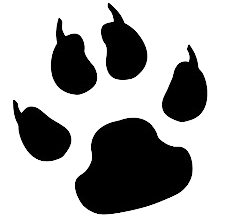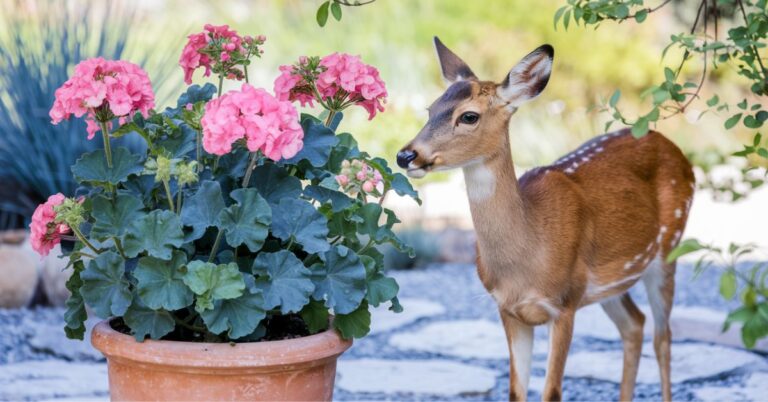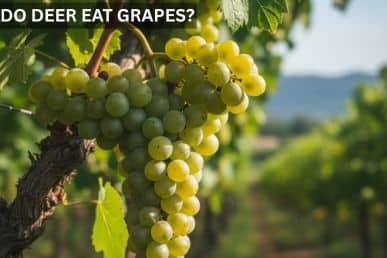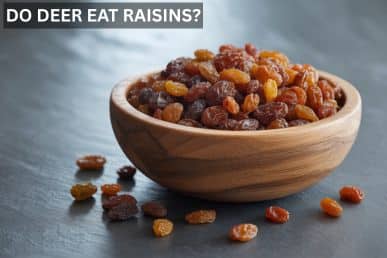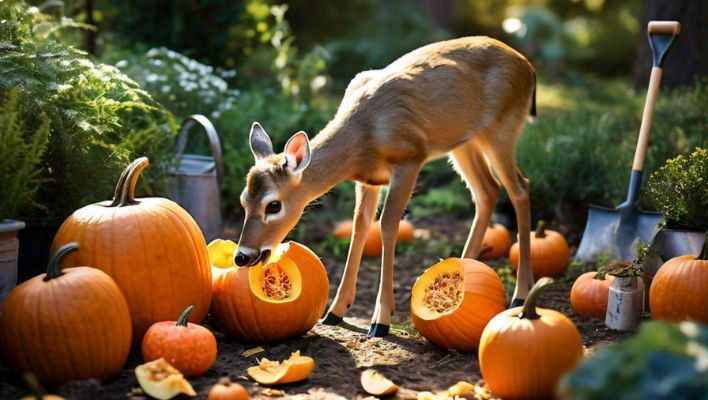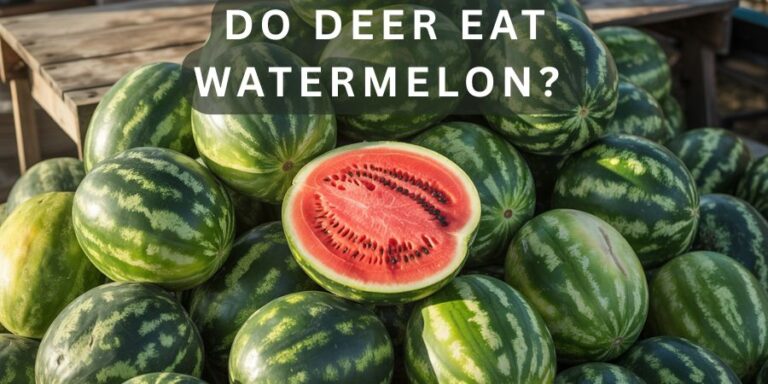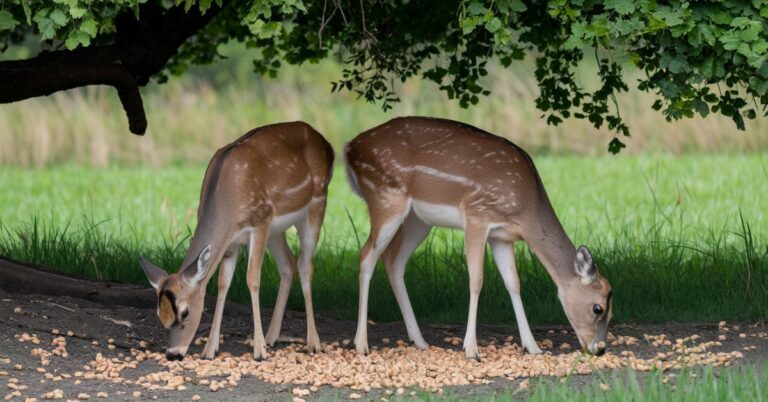Do deer eat pineapple or avoid it? The Surprising Truth
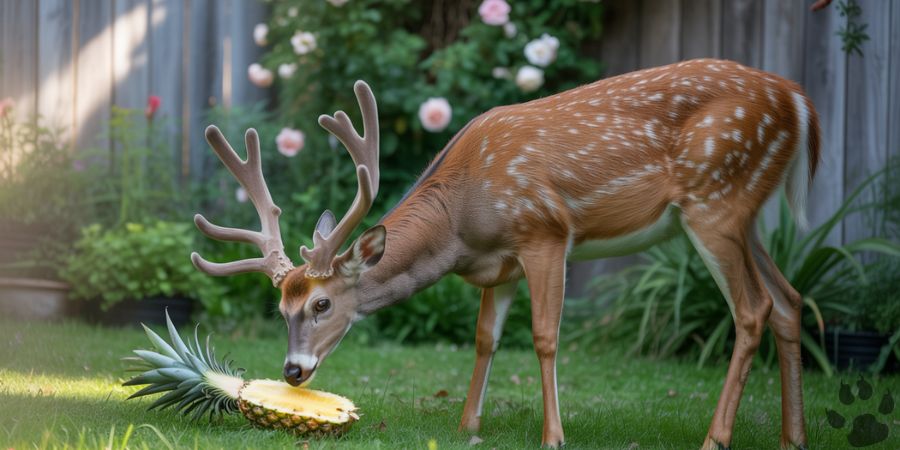
Deer are wild herbivores, meaning they only eat plant material like grass, leafy greens, vegetables, fruits, and nuts. You might wonder if these animals find pineapples, those sweet and juicy tropical fruits, tasty enough to eat.
Do deer eat pineapple? It’s not a question with a simple yes or no. While the flesh inside is certainly delicious and filling, pineapples aren’t a common or easy choice for deer. Why would they usually avoid such a beloved fruit?
- Pineapples have a very tough, spiky skin and a top that’s hard to break open—the spikes on a whole pineapple act as a deterrent, making deer leave it intact most of the time. Deer lack hands and rely on their teeth or hooves to access food—trying to kick or bite into a whole pineapple isn’t relatively easy for them.
- Finding a pineapple growing in the wild is rare. Deer are more likely to consume foods they acquire easily in their natural proximity, like fallen apples, berries, or citrus fruits such as oranges. If a ripe fruit breaks open (maybe from falling), the soft, sweet flesh inside could tempt a curious deer to try a bite. Still, those prickly skins usually keep pineapples safe from hungry deer!
Do deer eat pineapple rinds?
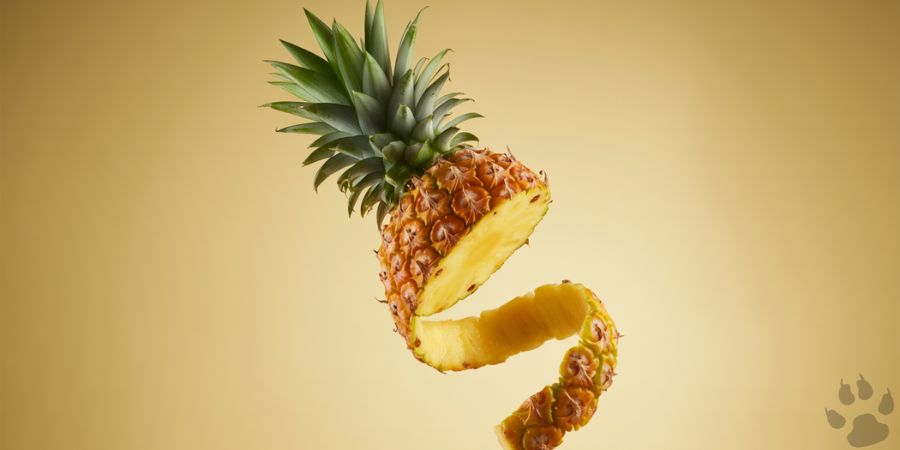
While deer might nibble on sweet pineapple flesh if they find it, they usually avoid the rind. That tough outer layer of the fruit isn’t something deer typically eat.
Pineapple skins are very fibrous and covered in small, sharp spikes, making them hard to chew and swallow. While the rind does contain some good stuff like minerals, antioxidants, and even bone-strengthening properties, its rough texture is tough on digestion.
Deer find it unpleasant and usually skip it. If you leave scraps like rinds in your garden or compost heap, especially at night when these nocturnal creatures are active, it could attract them or other curious animals.
Deer might come straying into your yard looking for an easier snack, drawn by the lingering sweet smell. To keep wild deer away, it’s best to put food waste in a secure location they can’t access.
Also, while pineapple rinds hold water, deer get hydrated mainly from streams and ponds, not fruit skins.
Can deer eat pineapple plants?
If you’ve planted tasty pineapple plants in your garden, watch out—especially with young ones trying to grow! Deer might eat the juicy leaves, and this creature could even pull up tender roots with its strong jaws, sometimes consuming the whole little plant!
Why? Young plants have weak resistance against attacks. Alongside other pests, deer can stop your garden from flourishing. To protect your pineapples, use protective measures like netting to prevent hungry visitors.
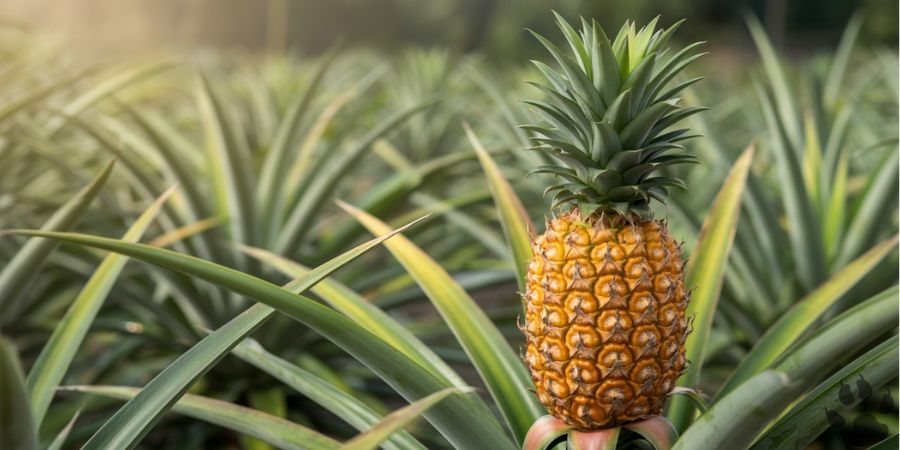
How to Protect Pineapple Plants From Deer?
Physical Barriers:
- Young pineapple plants are tasty treats for deer and other hungry critters. Protect them!
- Use wire cages around the whole plant to stop chewing.
- For the main stem (like a little tree trunk), apply wraps to the lower portions. This shields the bark and stems from damage and prevents girdling.
Use Plastic Jugs as Barriers:
- Take a gallon milk jug, water jug, or juice container and cut off the top and bottom.
- Place the jug over the pineapple plant while it’s still small, so the plant can grow out of the top.
Use Chicken Wire:
Surround some of your plants with chicken wire to form a physical barrier that keeps deer out.
Do deer raised in captivity eat pineapples?
Deer that are bred and live in captivity (like in zoos or parks) often live much longer than their wild cousins. A big reason for this is that they get adequate nutrition every single daily meal planned by their caretakers.
This special food helps them build strong bones and maintain a healthy immune system, keeping them well. Zookeepers focus on giving them the right mix of plants and special feeds.
So, are pineapples part of their diet? While fruits and vegetables can be yummy treats, pineapples aren’t a main food. However, this fruit is packed with vitamin C, which is great for helping the creature repair its body tissues and supporting a healthy immune system.
While not an ideal everyday meal for deer, a tiny bit of pineapple as a rare snack is mostly harmless, thanks to that helpful vitamin boost.
Is it better to cut fruit into pieces for deer or serve it whole?
When sharing fruits like apples or pineapples or juicy fruits like watermelon with deer, it’s friendlier to cut them into smaller pieces. Why? A deer is a gentle creature that might struggle to eat big, hard chunks. For apples, slice them up and take out the seeds to keep things safe.
For pineapples, always peel off the prickly skin and make sure those sharp spikes are removed—they’re too tough and pointy! Once the fruit is ready, deer will happily devour the sweet, juicy fruit inside.
Using a pineapple corer makes the job much easier—it safely removes skin, slices the fruit, and gets it ready for any curious critters (or your compost!). See the popular pineapple corer on Amazon.
Do deer attack pineapple plantations?
While deer might nibble on young plants if very hungry, farmers have reported that attacks on pineapple plantations are actually rare.
Why? Mature pineapple plants become super spiky—those tough leaves can actually injure a creature trying to munch on them! Each leaf has a sharp spine at the tip, giving the plant strong resistance against hungry animals.
Even the fruit itself is protected by a tough, pointy top. Because of this, a pineapple orchard isn’t very suitable or safe for grazing. Deer usually find it much easier to find less prickly meals elsewhere!
Are deer coming into your garden because of the pineapple plants?
It’s doubtful that pineapple plants alone will cause deer to start straying into your garden. Deer are more likely to visit if you’ve planted tasty vegetables like carrots, radishes, or lettuce, or sweet treats like tomatoes or strawberries—these are similar to their favorite wild food and really attract them.
Since deer are nocturnal (mostly active at night), you won’t spot them easily. Instead, check for clues in the morning: look for footprints, track marks, or nibbled leaves.
Remember, deer are often hunted, so they avoid busy spots unless hungry. If your garden has those yummier plants, they’re probably what attract deer, not pineapples!
Do deer eat pineapple guava foliage?
You might wonder if deer find pineapple guava plants tasty. While pineapple guava (Acca sellowiana) isn’t their absolute favorite snack, hungry deer will sometimes nibble on the leaves, flowers, or young fruit, especially if other food is scarce.
So, it’s not completely deer-resistant. If you want to grow these lovely plants, taking some precautions is smart to protect them. Think about using
- Physical barriers, like sturdy fences around your plants.
- Repellents are sprayed on the leaves to make them smell or taste bad to deer.
You can also view top-rated deer repellent on Amazon here.
Conclusion:
You might wonder if deer, being curious herbivores, would sample pineapple if they found it. The answer is they might occasionally try the sweet flesh, especially if the fruit is accessible (like fallen or cut pieces).
However, it’s a real rarity! Pineapples aren’t found in a deer’s natural habitat, making them very unfamiliar. That tough, spiky skin is a big barrier too. While deer enjoy many fruits, pineapple isn’t on their usual menu.
They are far more attracted to softer, familiar plants, foliage, or fruits like guava. Pineapple might only be nibbled if their preferred food is scarce.
For gardeners, pineapple is not a common source of worry, even in tropical areas where both thrive. While protective measures are smart for prized plants, guarding against pineapple-munching deer is rarely needed.
